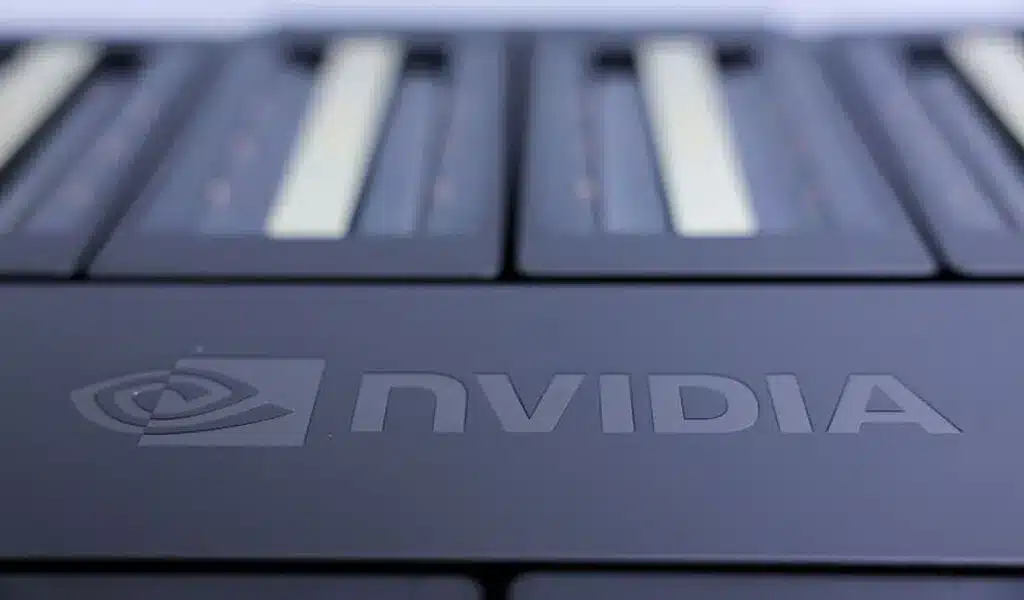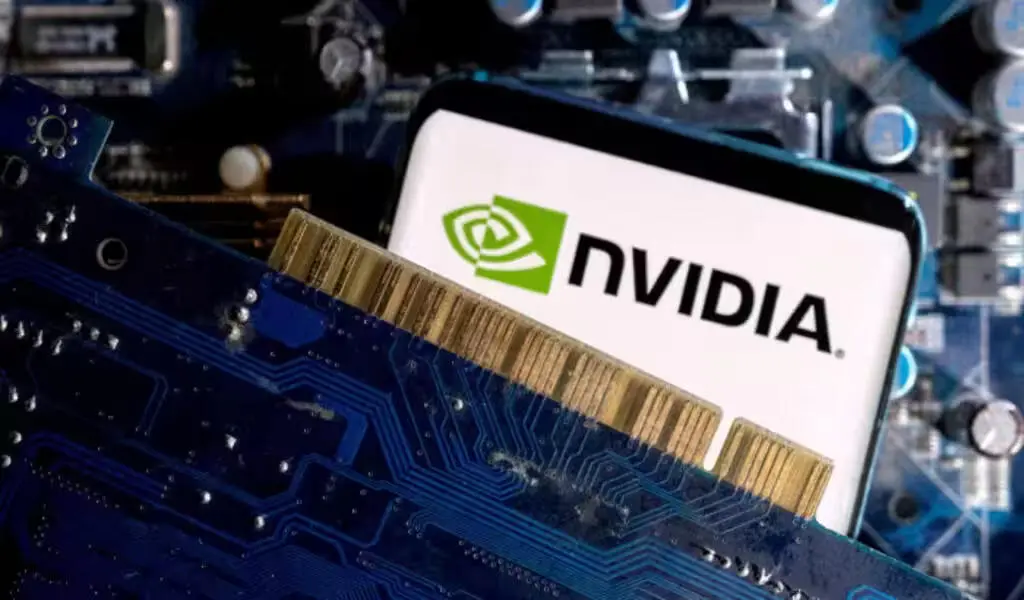Tech
Nations Developing their own AI Models Contribute to Nvidia’s Growing Chip Demand

According to a senior executive on Wednesday, countries developing artificial intelligence models in their own languages are flocking to Nvidia’s processors, boosting the company’s already phenomenal demand as generative AI becomes more and more important to corporations and governments.
Investors’ high expectations were not met by Nvidia’s third-quarter prediction for increasing sales of its processors, which enable AI technology like OpenAI’s ChatGPT. However, the business reported a growing number of global clients, including governments, who are now looking for their own AI models and the technology to support them.
Nvidia’s revenue in the fiscal year that concludes in January 2025
According to Chief Financial Officer Colette Kress, nations that implement their own AI models and applications will add about low double-digit billions to Nvidia’s revenue in the fiscal year that concludes in January 2025. This was said in a conference call with investors following the company’s results announcement.
This is more than the previous estimate, which said that these sales would bring in high single-digit billions for overall revenue. Nvidia projected overall sales for the third quarter, which ends in October, to be roughly $32.5 billion.
According to Kress, “national imperatives” are the AI infrastructure and expertise that “countries around the world (desire) to have their own generative AI that would be able to incorporate their own language, incorporate their own culture, and incorporate their own data in that country.”
She cited the National Institute of Advanced Industrial Science and Technology in Japan as an example, which is constructing an AI supercomputer using hundreds of Nvidia H200 graphics processing units.
AI is also being used by governments as a tool to bolster national security. “AI models are trained on data, and for political entities—particularly nations—their data are secret, and their models need to be customised to their unique political, economic, cultural, and scientific needs,” Shane Rau, an analyst at IDC computing semiconductors, said.
“Therefore, they need to have their own AI models and a custom underlying arrangement of hardware and software.”
In an effort to thwart AI advancements that would benefit China’s military, Washington imposed restrictions on the country’s imports of advanced chips to China in 2023, which hurt Nvidia’s sales in the area. Companies have been attempting to take advantage of government initiatives to develop AI systems in local languages.
IBM announced in May that the Data and Artificial Intelligence Authority of Saudi Arabia would use Watsonx, the company’s AI platform, to train its “ALLaM” Arabic language model.
In addition to the substantial investments in Nvidia’s hardware made by major cloud providers like Microsoft, countries looking to develop their own AI models can spur growth potential for the company’s GPUs, according to Bob O’Donnell, principal analyst at TECHnalysis Research.
Source: Usnews
Tech
NVIDIA’s Earnings: The Leader in AI Chips Demonstrates Relentless Growth.

(VOR News) – Nvidia, the world’s most valuable company and a catalyst of the artificial intelligence revolution, announced another quarterly report on Wednesday, much to the delight of investors.
The company’s value has risen by $2.2 trillion this year to reach $3.6 trillion, attributed to a near doubling of chip sales. It reported revenue of $35.08 billion, which fell short of the anticipated $33.15 billion. Year on year, its profits more than doubled. Revenue rose 94% compared to the same quarter of the prior year.
Nvidia predicted 70% growth.
Nvidia reported earnings of $0.81 per share, exceeding analysts’ predictions by $0.81. After the announcement, Nvidia’s stock plummeted over 5% in extended trading but immediately recovered to stay at a comparable level; it had previously closed at $145.89 in New York.
In a press statement last week, Nvidia CEO Jensen Huang projected that the computational power facilitating generative AI development will increase by “a millionfold” over the next decade.
During an earnings call, Huang asserted that the extensive adoption of Nvidia technology is instigating a platform transition from coding to machine learning, prompting the reconfiguration of traditional data centers to facilitate artificial intelligence development.
A novel industrial revolution poised to create an artificial intelligence sector valued in the multi-trillion dollar range. Generative artificial intelligence is a new industry with artificial intelligence factories manufacturing digital intelligence, not merely a new tool capacity,” he stated.
“AI is revolutionizing every industry, organization, and country,” stated Huang. “Constructing an artificially generated data omniverse… the epoch of robotics has commenced.”
The robust demand for NVIDIA’s Blackwell GPU chips appears to have mitigated concerns regarding a potential decline in the company’s demand, as major digital corporations invest billions in data centers and artificial intelligence processing.
August low
After the election, the semiconductor stock has attained unprecedented peaks, increasing almost 200% this year and exceeding 1,100% over the past two years.
Nevertheless, as they struggle to compete with Nvidia’s supremacy in AI, other chip manufacturers have become a net detriment to the industry.
Wedbush analyst Dan Ives anticipated another “drop-the-mic performance” from Nvidia before the results were announced, asserting that the business was “the sole contender with over $1 trillion in AI capital expenditure forthcoming over the next few years, with Nvidia’s GPUs representing the new oil and gold in this domain.”
IT companies spent billions.
Many perceive Nvidia as a barometer for the technology sector and the desire for artificial intelligence, which has driven Wall Street to numerous all-time highs this year.
Markets are anxious due to the escalation of the Russia-Ukraine conflict, the likelihood that the Federal Reserve will not reduce US interest rates, and the potential for global tariff increases under Donald Trump’s forthcoming administration.
Multiple analysts corroborated Ives’ assertion that Nvidia’s forthcoming Blackwell processor might propel the company’s revenues and market capitalization to historic levels. Indicators of “extraordinary demand” for the new chip, including forecasts of unprecedented sales and accounts of depleted inventories for the forthcoming year, are significant indicators of Nvidia’s continued exceptional growth, as Saxo chief investment analyst Charu Chanana stated.
Nevertheless, due to its inflated valuation, Chanana warned that “any indications of production delays or insufficient demand could exert pressure on the stock.”
This week, a source reported that the chipmaker is seeing server overheating issues with its latest graphics processors, the B200 and GB200 NVL72, named after renowned American statistician and mathematician David Harold Blackwell.
Nvidia’s spokesperson remarked that “the engineering iterations are standard and anticipated,” without explicitly dismissing the report.
“Minor details can disrupt significant investments consistently,” stated computer magnate Michael Dell.
SEE ALSO:
The Impact of Tier Regions on Digital Advertising ROI
The Game Awards 2024: How to Watch
Tech
How to Boost Your Instagram Live Videos

Video marketing on Instagram is booming. Today, developers offer influencers and entrepreneurs many tools to make their pages popular and improve their online credibility and visibility.
Streams are one of the most effective ways to communicate with the audience, expand reach and improve engagement. However, as with everything else, you should clearly understand what results you expect from this type of PR and what tools will help you achieve them.
Of course, the competition here is high and intense, so you should know the best ways to promote your live sessions and improve their visibility to stay ahead of the competition and make your streams better and viewed every day. You need to know several secrets to achieve the desired result here, and today, we’ll tell you about them. Keep reading!
Use paid Instagram service.
So, your goal is to get as many views as possible and attract more loyal fans. How can you do this? Generally speaking, there are many ways, but they all require a lot of effort, time and resources from you. Most of them are created for long-term PR; you’ll get the result from free methods only after a few weeks or months.
The best thing is that you can greatly simplify your growth and instantly get as many interactions as you want. The secret is simple. Today, professional advertising companies offer various boosts for rapid growth, including the opportunity to buy Instagram live video views.
You can check out Viplikes: https://viplikes.net/buy-instagram-live-video-views. In other words, real people will come to your stream and stay here for a while. Such a purchase will inevitably attract more new target subs – your live session will occupy a leading position in their feed. So, if you don’t have time to promote live videos in freeways or want to support your content, use a paid boost and combine it with other secrets of success, which we’ll share below.
Notify your followers and post teasers.
Yes, it’s normal if you start a stream without any notifications for your subscribers, but in this case, you should keep in mind that there will be much fewer interactions than you would like. That’s why SMM specialists and famous content makers recommend notifying fans in advance and writing the live session’s time, date and topic. Agree this is logical; if people know about the upcoming live video, they are more likely to visit it. So, if you aim to build up a large viewing base, keep this rule in mind and notify subscribers using Stories, Reels, posts or something else.
It’s the same with teasers: spread as much information as possible about the upcoming stream. Promise something unique and interesting that will be available only to live spectators. This is another secret of a successful session!
Collaborations
If you’ve never started streaming with another influencer, it’s time to do so! This is one of the best ways to quickly attract new spectators and improve live video statistics—a double benefit.
But you need to understand that not all bloggers agree to such activities, so it’s better to choose those with whom you’re already familiar or who have the same statistical indicators. Then, the effectiveness of the live sessions will be excellent, and the collaboration will go smoothly. Good luck!
Related News:
Turkey Instagram Ban Update!! Nationwide Blackout
Tech
The Impact of Tier Regions on Digital Advertising ROI

In today’s complex digital advertising world, knowing Tier regions is key. It is vital for getting the best ROI. Tier regions, also known as Tier 1, Tier 2, and Tier 3, refer to separate markets that may have different levels of economic development and different purchasing and media consumption patterns.
All markets raise prospects and issues that can affect ad success. This article reviews Tier regions and their impact on digital ad ROI, aiming to help marketers refine their strategies.
Understanding Tier Regions
- Tier 1 countries are generally developed economies with higher disposable income, such as the United States, Canada, and some Western European countries. These markets are usually characterized by high levels of advertisement clutter, that is, high competition, yet the population is accustomed to advertisements.
- Tier 2 regions are emerging markets like Brazil, India, and parts of Eastern Europe. These areas have relatively higher rates of economic growth and growing Internet usage, hence becoming the right place for advertisers. Yet they can also have disadvantages, including fluctuations in consumer behavior and less overall buying power compared to Tier 1 markets.
- Tier 3 regions generally encompass developing countries with slower economic growth, and digital infrastructure may still be in its infancy. Although these markets present long-term growth, the short-term effectiveness may be low owing to consumer purchasing capability and frequency of exposure to online advertisements.
Consumer Behaviour Concerning Organizational Setting
The behavior of the consumers in the different Tier regions is quite divergent. So, which Tier to choose? Tier 1 markets are usually more selective. They demand high quality and relevancy of the offered content.
They also prefer to interact with companies that have values that they hold dear, such as environmental conservation and corporate social responsibility values. This means that in these regions, the advertising companies may be forced to spend more time developing appealing messages to the target market.
In contrast, Tier 2 and Tier 3 consumers will likely follow the low involvement model, where the communication strategy consists of simple messages that focus on value and utility.
Advertisers targeting these regions should not concentrate on sales conversion but on branding to foster consumer trust. Marketing people who understand these differences in behaviors can help them adapt to them and gain much better ROI than they would expect.
Cost Considerations
The cost of advertisement is greatly influenced by the Tier regions, as illustrated in the figure below. Because of high competition, in Tier 2 and Tier 3 markets, there will be higher cost per click (CPC) and cost per impression (CPM).
This may, therefore, translate into higher initial costs, but it usually has the potential to give higher returns if the campaigns are managed appropriately.
Tier 2 and Tier 3 locations have lower GDP per capita, so advertising costs less there. This will attract brands with limited budgets.
However, marketers need to be wary; the latter is not necessarily always true, meaning that it is not rare to see lower costs entail lower ROI. The success of these campaigns can depend on audience activity and brand familiarity in different regions.
Measuring Success
Therefore, it is important to set success metrics, especially when comparing the ROI of Tier regions. Traditional measures, such as conversion rates and customer acquisition costs, may work better in Tier 1 markets.
In Tier 2 and Tier 3 cities, the end action value may better define success. Depending on the segmentation and targeting strategies, metrics like brand awareness or engagement might work, too.
For instance, tracking such factors as interactions on social networks or website attendance can significantly determine how successfully the campaign reflects the interests of the target audience in these regions.
The Tier region analysis of the current success metrics can be seen through the following perspective: marketers need to set up detailed success metrics depending on the attributes of every Tier region, which can provide a closer look at the campaign results.
Future Trends
Knowing new trends in digital ads in Tier regions will be key to getting high returns in the future. For example, mobile-first ads suit Tier 2 and 3 markets. These markets have the most active online users of mobile devices. Mobile campaign companies could reach many consumers and boost engagement.
Further, improved data analysis methods and artificial intelligence are helping advertisers better decide where to spend their money across Tier regions. These technologies allow marketers to fine-tune their campaigns over the traffic flow to maximize every strategy implemented for the best returns on investment.
Conclusion
The importance of Tier areas for digital advertising ROI cannot be underscored. Marketers may create more successful tactics for their target audiences by knowing the distinct features of each Tier, such as customer behavior, cost considerations, and success indicators.
As we approach 2024 and beyond, staying on top of area trends will be critical for optimizing advertising results. Those who adapt will succeed in today’s international digital marketplace.
Related News:
WELL Health Receives Permission for $44 Million Digital Initiative
WELL Health Receives Permission for $44 Million Digital Initiative
-
Politics2 weeks ago
Trudeau Orders Facebook to Block Australian Presser Video
-
Business4 weeks ago
Canada CBC News CEO Catherine Tait Recalled to Parliamentary Committee
-
Celebrity3 weeks ago
Shaun White’s Proposal To Nina Dobrev Was Romantic Gold
-
Tech4 weeks ago
Apple Launches The IPhone Into The AI Era With Free Software Update
-
News3 weeks ago
Pro-Khalistanis Sikhs Attack Hindu Temple in Brampton
-
Food3 weeks ago
Starbucks Is Making A Popular Add-On Free Of Charge

























